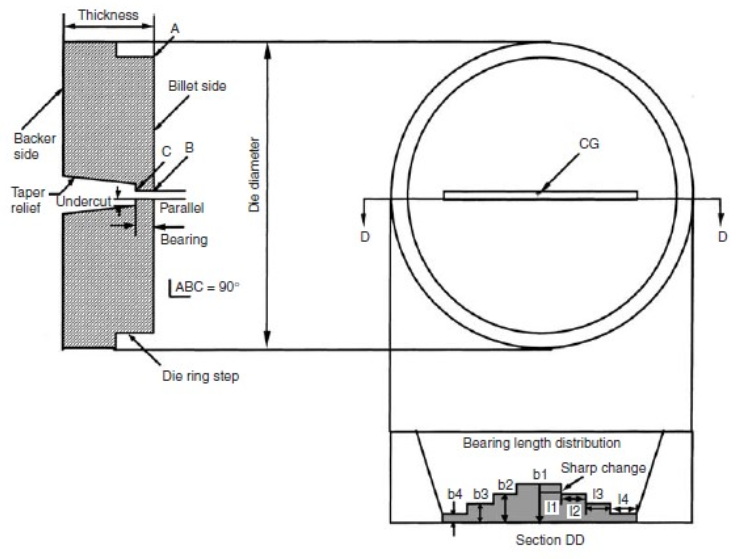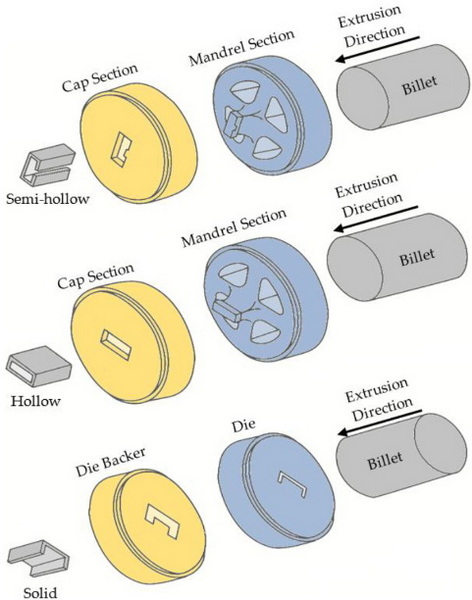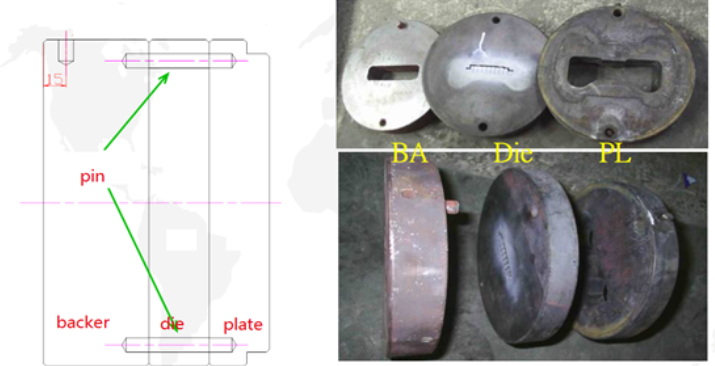Content Menu
● Understanding Aluminum Extrusion Die Correction
● The Importance of Die Correction
● Common Methods of Aluminum Extrusion Die Correction
>> Choking and Relieving Bearings
>> Modifying Die Components
>> Temperature Management
● The Role of Technology in Die Correction
● Best Practices for Effective Die Correction
>> Continuous Improvement Strategies
● Challenges in Aluminum Extrusion Die Correction
● Future Trends in Aluminum Extrusion Die Correction
● Conclusion
● FAQ
>> 1. What is aluminum extrusion die correction?
>> 2. Why is die correction important?
>> 3. What are common methods used for die correction?
>> 4. How does temperature affect aluminum extrusion?
>> 5. What role does technology play in die correction?
Aluminum extrusion is a manufacturing process that involves forcing aluminum alloy through a die to create a specific cross-sectional profile. This process is widely used in various industries due to its efficiency and the versatility of aluminum. However, achieving the desired profile often requires precise adjustments to the extrusion die, a process known as "aluminum extrusion die correction". This article will explore the intricacies of this process, including its importance, methods, and best practices.

Understanding Aluminum Extrusion Die Correction
What Is Die Correction?
Die correction refers to the adjustments made to an aluminum extrusion die after initial testing or during production runs. These corrections are necessary to ensure that the extruded profiles meet specified dimensions and quality standards. The need for die correction arises from various factors, including:
- Improper metal flow: Uneven flow can lead to defects in the extruded product.
- Dimensional variations: Changes in temperature and pressure can affect the dimensions of the profile.
- Surface finish issues: Poor surface quality can result from die wear or improper design.
The role of a die corrector is crucial in this process. They analyze the extrusion results and determine the necessary adjustments to achieve optimal performance.
The Importance of Die Correction
Die correction is essential for several reasons:
- Quality Control: Ensures that extrusions meet design specifications.
- Cost Efficiency: Reduces material waste by minimizing defects.
- Operational Efficiency: Enhances the overall performance of the extrusion press.
Without proper die correction, manufacturers may face increased production costs and compromised product quality.
Common Methods of Aluminum Extrusion Die Correction
There are several methods employed in aluminum extrusion die correction. Each method targets specific issues related to metal flow and dimensional accuracy.
Choking and Relieving Bearings
One of the most common techniques involves adjusting the bearings within the die. This can be done by:
- Choking: Reducing the size of specific bearing areas to slow down metal flow.
- Relieving: Enlarging certain areas to speed up metal flow.
These adjustments help balance the flow of aluminum through different sections of the die, ensuring uniformity in the final product.
Modifying Die Components
Another method involves physical modifications to various components of the die:
- Die Pocket Adjustments: Modifying the shape or size of the die pocket can influence how aluminum flows through it.
- Feeder Plate Changes: Adjustments to the feeder plate can improve material distribution within the die.
These modifications are often performed using milling machines or grinders to achieve precise changes.
Temperature Management
Temperature plays a critical role in aluminum extrusion. Proper thermal management can significantly reduce defects. Key considerations include:
- Die Temperature: Maintaining an optimal temperature helps prevent excessive wear and tear on die components.
- Billet Temperature: The temperature of the aluminum billet before extrusion affects its flow characteristics.
By monitoring and adjusting these temperatures, manufacturers can improve flow rates and reduce defects in extruded profiles.

The Role of Technology in Die Correction
Advancements in technology have transformed how die corrections are performed. Techniques such as Finite Element Analysis (FEA) allow engineers to simulate extrusion processes and predict potential issues before they arise. This proactive approach enhances efficiency and reduces downtime associated with corrections.
Additionally, computer-aided design (CAD) software has become integral in designing dies with precision. Engineers can create detailed models that visualize how changes will impact metal flow and final product quality. This capability allows for more informed decision-making during the design phase, reducing the need for extensive corrections later on.
Best Practices for Effective Die Correction
To ensure successful aluminum extrusion die correction, manufacturers should adhere to several best practices:
- Regular Maintenance: Routine inspections and maintenance of dies can prevent excessive wear and prolong their lifespan.
- Training for Die Correctors: Continuous training ensures that correctors are familiar with new technologies and methods.
- Data Analysis: Keeping detailed records of extrusion runs helps identify patterns that may indicate underlying issues with dies.
Continuous Improvement Strategies
Incorporating continuous improvement strategies into die correction processes is vital for long-term success. This could involve:
- Feedback Loops: Establishing feedback mechanisms where operators report issues immediately allows for quicker responses to problems.
- Cross-Department Collaboration: Encouraging collaboration between design engineers, production staff, and quality control teams ensures everyone is aligned on goals and challenges related to die performance.
Challenges in Aluminum Extrusion Die Correction
Despite best efforts, several challenges can arise during aluminum extrusion die correction:
- Material Variability: Differences in raw material properties can lead to unpredictable behavior during extrusion, complicating correction efforts.
- Complex Geometries: Intricate designs may require more extensive modifications than simpler profiles, leading to longer lead times for corrections.
- Equipment Limitations: Not all facilities have access to advanced tools or technology needed for precise adjustments, which can hinder effective corrections.
Addressing these challenges requires a combination of skilled personnel, appropriate technology, and robust processes tailored to specific production needs.
Future Trends in Aluminum Extrusion Die Correction
As industries evolve, so too does the field of aluminum extrusion die correction. Some emerging trends include:
- Increased Automation: Automation technologies are being integrated into extrusion processes, allowing for real-time monitoring and adjustments based on data analytics.
- Sustainability Practices: There is a growing emphasis on sustainable practices within manufacturing. This includes optimizing dies not only for performance but also for energy efficiency and reduced waste generation.
- Advanced Materials Research: Ongoing research into new aluminum alloys may lead to improved properties that influence how dies are designed and corrected.
Conclusion
Aluminum extrusion die correction is a vital aspect of producing high-quality aluminum profiles. By understanding the various methods available for correcting dies, manufacturers can enhance product quality, reduce waste, and improve operational efficiency. As technology continues to evolve, so too will the techniques used in this critical process. Embracing continuous improvement strategies will further enhance capabilities in this area, ensuring that manufacturers remain competitive in an ever-changing market landscape.

FAQ
1. What is aluminum extrusion die correction?
Aluminum extrusion die correction is the process of adjusting an extrusion die after initial testing or during production runs to ensure that extruded profiles meet specified dimensions and quality standards.
2. Why is die correction important?
Die correction is crucial for maintaining product quality, reducing material waste, and enhancing operational efficiency in aluminum extrusion processes.
3. What are common methods used for die correction?
Common methods include choking and relieving bearings, modifying die components, and managing temperatures during the extrusion process.
4. How does temperature affect aluminum extrusion?
Temperature affects metal flow characteristics; maintaining optimal temperatures for both dies and billets helps reduce defects during extrusion.
5. What role does technology play in die correction?
Technology such as Finite Element Analysis (FEA) allows engineers to simulate processes and predict potential issues before they occur, improving efficiency in die corrections.






















